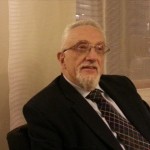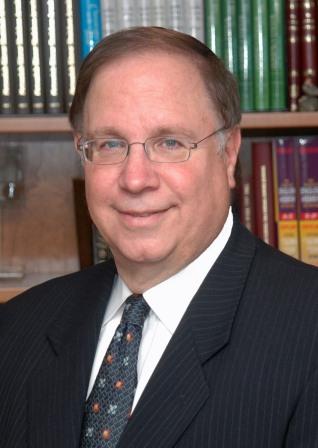This interview with Dr. Alex Grobman by Dr.Manfred Gerstenfeld has just been published at Israel National News, and republished here with the author’s consent.
FORGOTTEN RABBIS WHO HELPED HOLOCAUST SURVIVORS
Manfred Gerstenfeld interviews Alex Grobman
 “Credit for good deeds is often allocated improperly. Holocaust commemorators often honor the American soldiers who participated in the liberation of concentration or slave labor camps. Yet they frequently overlook the American Jewish chaplains who greatly assisted Holocaust survivors in the American zones of Germany and Austria at the end of the Second World War and the early years thereafter.
“Credit for good deeds is often allocated improperly. Holocaust commemorators often honor the American soldiers who participated in the liberation of concentration or slave labor camps. Yet they frequently overlook the American Jewish chaplains who greatly assisted Holocaust survivors in the American zones of Germany and Austria at the end of the Second World War and the early years thereafter.
“Many Jewish chaplains acted courageously and charitably beyond their official tasks. Their primary function was to assist American soldiers in religious matters. There was even an order against fraternization in Germany with those living there. Some Jewish chaplains even took risks for survivors which could have gotten them court-martialed.”
Dr. Alex Grobman is Executive Director of the America-Israel Friendship League, Inc. in New York. One of his many books is Rekindling the Flame: American Jewish Chaplains and the Survivors of European Jewry, 1944-1948.
“Holocaust survivors in German camps presented unusual challenges for the Allied forces. The American military government wanted to help the Jewish Displaced Persons (DP’s), but had great difficulty in understanding their numerous problems. Jewish survivors not only needed material help, but also psychological and spiritual support. Conditions in most of their camps were deplorable.
“The army wished to repatriate all DP’s as soon as possible to the country they came from. However, of the more than 200,000 European Jews in Germany and Austria at the end of the war, many did not wish to return to the countries they had been deported from. Those who did faced danger, in particular in Poland and Lithuania.
“Many survivors who returned were frequently harassed. We do not know how many were killed. The most notorious pogrom was in July 1946, in which 47 Jews were murdered and more than 50 were wounded in Kielce, Poland. This made it clear why the majority of Polish Jews feared repatriation. Jews from Western Europe, Hungary, Romania, and Czechoslovakia were in a better position to reclaim their possessions and rebuild their lives.
“Jewish chaplains were among the first American Jews to meet Holocaust survivors. More than 90 of them had contact with DP’s from 1944-1948. They were not official representatives of any American Jewish organization. Many chaplains attempted to influence the military’s policies toward Jewish survivors. If they did not succeed, they often undertook various initiatives unilaterally. This sometimes meant risking their own careers, by engaging in covert actions to ease some of the traumas and dilemmas confronting Jewish survivors in Germany.
“Jewish chaplains helped survivors search for their families through illegal use of military mail; they rescued children hidden in churches and on farms; and they inspired American Jews to ship tons of food, clothing and basic necessities. They accompanied trains that transported Jewish children and adults out of Eastern Europe, and on youth transports to Palestine. A number worked with Brichah, the underground movement that smuggled Jews out of Europe and into Palestine. They also established schools, ritual baths and a summer camp. Several published educational material and functioned as rabbis of communities.
“One outstanding example was Chaplain Abraham Klausner, a reform rabbi. He tried to make the army acknowledge the uniqueness of the Jews’ situation. Klausner worked to solve immediate problems and needs, but also to have Jewish survivors recognized as a separate nationality. He helped establish Jewish “camps” to protect the survivors from frequent harassment by non-Jewish inmates. He assisted in creating an organization of survivors, the Central Committee of Liberated Jews in Bavaria, which represented their interests to the American military. Klausner was instrumental in establishing three Jewish hospitals where DP’s were treated by Jewish physicians. Simultaneously he attempted to alert American Jews to their plight.
“With the help of survivors, Klausner compiled and published six volumes containing systematic lists of survivors in Bavaria and distributed them throughout the world. This was the first major attempt to communicate with Jews in the West.
“With assistance from Max Braude, an Orthodox rabbi and Judah Nadich, a Conservative rabbi, Klausner was able to help survivors establish Unzer Weg. This became the largest Yiddish weekly in Germany and was viewed by many survivors as their national newspaper.
“Klausner saw that Jews in Dachau dressed in their camp uniforms and were still forced to live behind barbed wire. He thereupon wrote an unauthorized report about the state of Jewish survivors in Bavaria which created a stir in the American Jewish community. Klausner also played a key role in shaping the Harrison Report that established the position of adviser on Jewish affairs to the commander of the U.S. forces in Europe in August 1945, in response to the plight of Jewish DP’s.
“There was no difference in the extent of commitment between the Orthodox, Conservative and Reform rabbis. They all tried to show survivors that they were no longer alone. We owe these chaplains a tremendous debt of gratitude. Their many good deeds merit to be remembered.”

